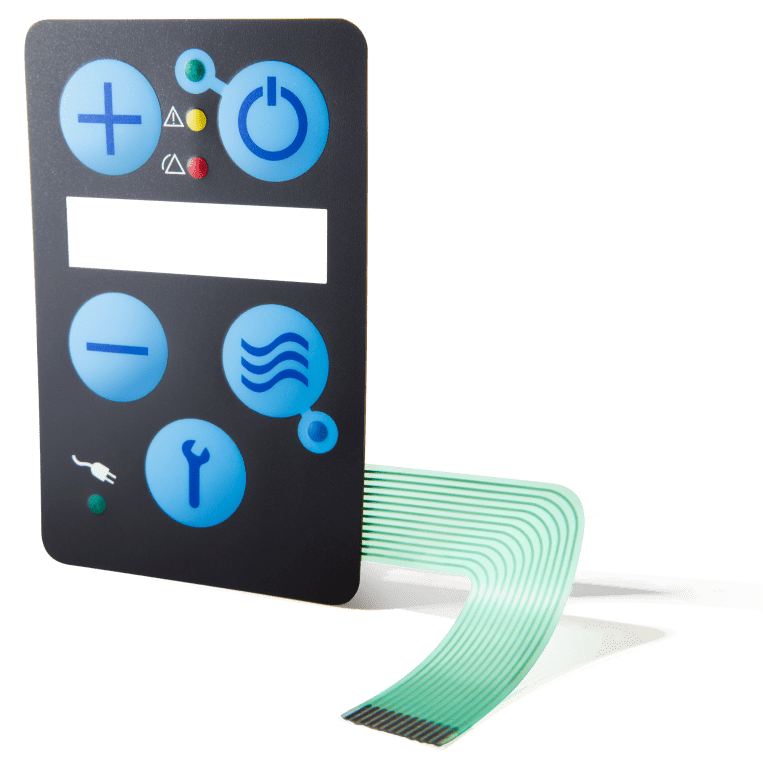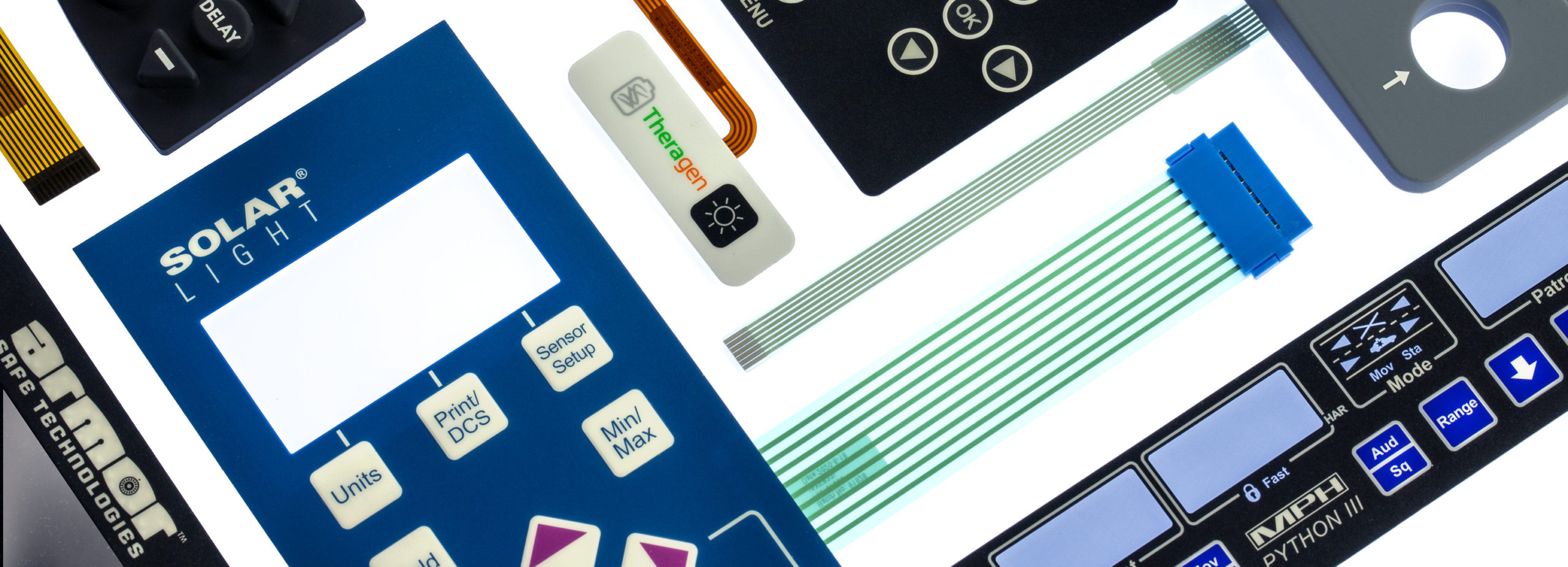The Perks of Membrane Switches Over Mechanical Switches in Harsh Environments
The Perks of Membrane Switches Over Mechanical Switches in Harsh Environments
Blog Article
Membrane Layer Change Modern Technology: The Trick to Trusted and Cost-Effective Interfaces
Membrane button technology has arised as an essential component in the layout of user interfaces, offering both reliability and cost-effectiveness across a varied array of applications. As we explore the complex advantages of membrane layer switches, their potential for development raises concerns concerning future applications and progressing trends.
Understanding Membrane Switch Over Modern Technology
Membrane switch technology is a commonly used interface remedy in numerous digital devices, using a seamless mix of capability and layout. This innovation incorporates several layers of products, typically consisting of a visuals overlay, spacer layer, and a circuit layer. The graphic overlay shows the user interface aspects, while the spacer layer divides the circuit layer from the overlay up until a user turns on a switch.
When stress is applied to the overlay, the circuit layer completes the electrical circuit, sending out a signal to the tool. This system enables various arrangements, including responsive responses and backlighting alternatives, enhancing individual communication. Membrane buttons are generally produced using long lasting materials such as polyester or polycarbonate, ensuring long life and resistance to environmental elements like dampness and dirt.
The convenience of membrane layer switches enables their application in varied markets, consisting of medical gadgets, consumer electronic devices, and industrial controls. Their small layout permits for integration right into space-constrained environments, supplying a reliable interface without jeopardizing visual appeal. Understanding the details of membrane button modern technology is crucial for producers and designers seeking to create trusted and effective human-machine user interfaces.
Trick Advantages of Membrane Buttons
While different interface services exist, membrane layer switches over offer distinctive advantages that make them a recommended option in numerous applications. Among the primary advantages is their durability; membrane switches are designed to hold up against rough environmental problems, including dampness, dust, and temperature changes, making sure long-lasting efficiency. This resilience dramatically minimizes the demand for frequent replacements, therefore lowering total upkeep costs.

In addition, membrane layer buttons are light-weight and small, making them ideal for applications where space is limited. Their inconspicuous design adds to a streamlined look without compromising performance.
Cost-effectiveness is additionally a noteworthy benefit, as the production process for membrane changes tends to be less costly compared to standard mechanical switches. This affordability, incorporated with their reliability and simplicity of setup, positions membrane switches over as a practical option for a wide variety of markets looking for efficient and effective user interfaces.
Applications Across Numerous Industries
Just how do membrane layer buttons adapt to the diverse needs of numerous industries? Membrane switch technology is increasingly acknowledged for its versatility, making it ideal for a wide range of applications throughout multiple markets.
In customer electronic devices, membrane you can look here layer buttons give a small option for remote controls and home devices, enhancing customer experience via intuitive layout. In addition, the commercial sector leverages membrane layer buttons for equipment control board, gaining from their resistance to rough settings, such as dampness and dirt.
Army and aerospace applications additionally utilize membrane switches for their reliability and ability to endure severe conditions, making certain functional effectiveness in essential scenarios. In addition, the food and drink industry adopts these buttons for automated systems, where hygiene and ease of operation are extremely important. Eventually, membrane buttons are tailored to satisfy the distinct demands of each sector, confirming their crucial role in modern-day technology interfaces
Layout and Modification Options

In the realm of membrane switch technology, design and customization alternatives play an essential role in improving performance and customer communication. These switches can be customized to meet specific operational demands and visual preferences, making them versatile parts in numerous applications.
Among the primary customization options is the design of the button itself, which can be developed to suit distinct interface and ergonomic factors to consider. By changing the form, dimension, and setup of switches, suppliers can develop intuitive layouts that promote simplicity of usage. Furthermore, the incorporation of various colors and visuals overlays enables branding and improved presence, guaranteeing that customers can promptly determine features.
Moreover, membrane layer switches can be engineered with different responsive responses mechanisms, such as elevated buttons or distinct clicks, to enhance the user experience. Different products can also be selected for durability and environmental resistance, resolving factors such as wetness, temperature changes, and chemical exposure.
Inevitably, the comprehensive layout and customization alternatives offered in membrane button modern technology encourage services to develop tailored options that not only fulfill useful needs but additionally straighten with their branding and functional demands.

Future Fads in Membrane Layer Buttons
As membrane switch technology remains to advance, future fads are progressively focused on enhancing user experience and incorporating sophisticated performances. One substantial pattern is the assimilation of touch-sensitive and capacitive technologies right into standard membrane layer buttons. This development permits more instinctive individual interfaces, why not try this out offering tactile feedback while preserving a smooth style.
One more emerging fad is making use of environmentally pleasant materials, driven by the expanding demand for lasting manufacturing methods. Producers are seeking to reduce their carbon footprint by making use of recyclable substratums and low-impact inks, straightening with global sustainability goals.
Additionally, the increase of the Internet of Things (IoT) is triggering the incorporation of wise features into membrane switches. Boosted connectivity choices will certainly enable devices to connect with each other, permitting smooth integration right into more comprehensive systems.
In addition, developments in printing technologies, such as digital printing, are permitting greater style flexibility and modification. This enables makers to generate complex layouts and lively colors cost-effectively.

Verdict
Finally, membrane switch modern technology stands for a vital innovation in user interface style, supplying considerable advantages in sturdiness, modification, and cost-effectiveness. Its widespread applicability throughout diverse industries underscores its significance in modern innovation. As developments continue to emerge, specifically in touch-sensitive interfaces and sustainable materials, the potential for membrane look these up layer changes to enhance customer experience and capability continues to be promising. Proceeded exploration of this innovation will likely generate additionally improvements and widen its extent in future applications.
Report this page